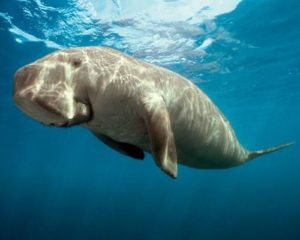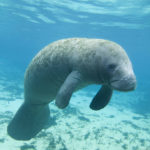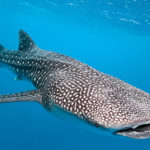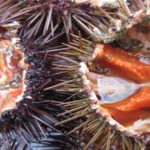Dugongs – information
 Dugongs eagerly feed on the roots of algae and sea grass. Search for food animals are using sensitive tactile whiskers, growing on the muzzle. Holding the sea plant in the teeth, the dugong with the front fins undermines its roots. Before eating the plant, the animal rinses it in water.
Dugongs eagerly feed on the roots of algae and sea grass. Search for food animals are using sensitive tactile whiskers, growing on the muzzle. Holding the sea plant in the teeth, the dugong with the front fins undermines its roots. Before eating the plant, the animal rinses it in water.
Dugong lives in the sea, but, like other mammals, breathes atmospheric air. Like in other marine inhabitants, it has a streamlined body shape. The diet of this marine animal is the same as for all representatives of a number of sirens – it consists only of marine plants. Dugong chews algae with horny plates that grow on its upper and lower jaws. Together with three kinds of manatees, the dugong is among the sirens, which in the past was called a series of sea cows. The usual dugong is the only member of the Dugong family. This species does not have subspecies.
Looking at dugongs and manatees outwardly, it seems that they have much in common. However, in many respects they differ from each other.
Dugong is smaller than the manatee, it has a large head with an elongated muzzle. The tail of the dugong is not rounded, and on the forelimbs there are no such nail-like hooves characteristic of the manatees. Most of life dugong conducts at a depth of 6-10 meters, rising every few minutes to the surface to fill its lungs with air.
Female dugongs reach puberty at the age of 8-10 years. In the breeding season, these animals are very active, between the males often there are collisions. After a pregnancy lasting about a year, females usually give birth to one young. Immediately after birth, the mother lifts the baby to the surface, so that he first takes air into the lungs. The newborn weighs about 150 kg. During feeding, the female flips on its back, holding the cubs with forelegs on the chest.



























